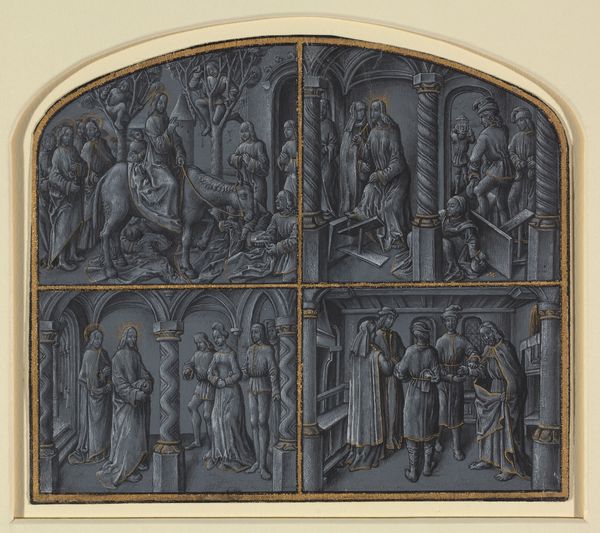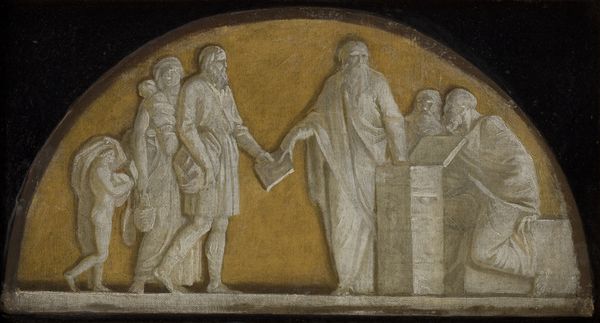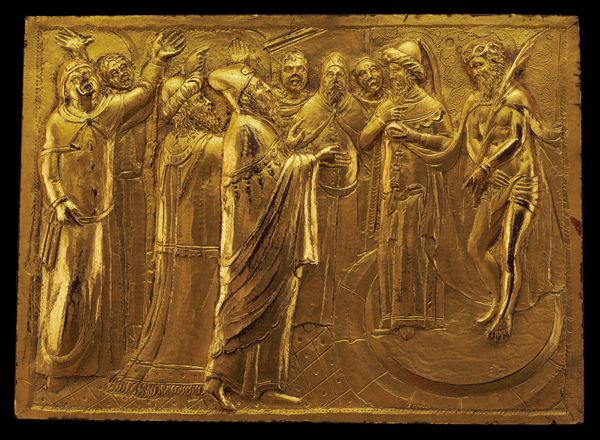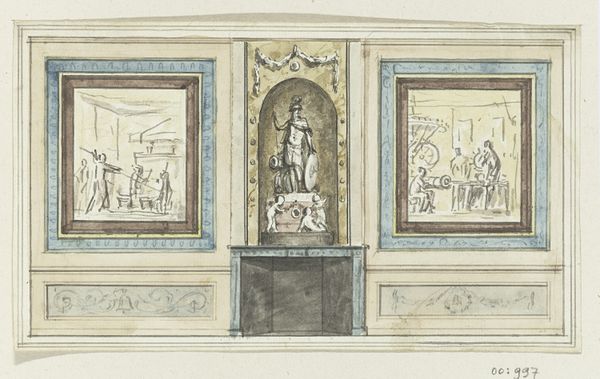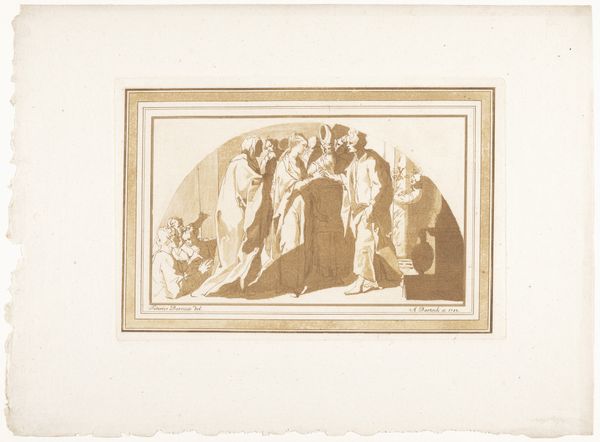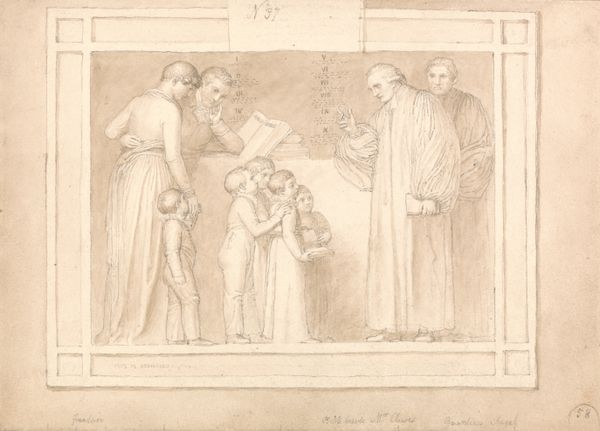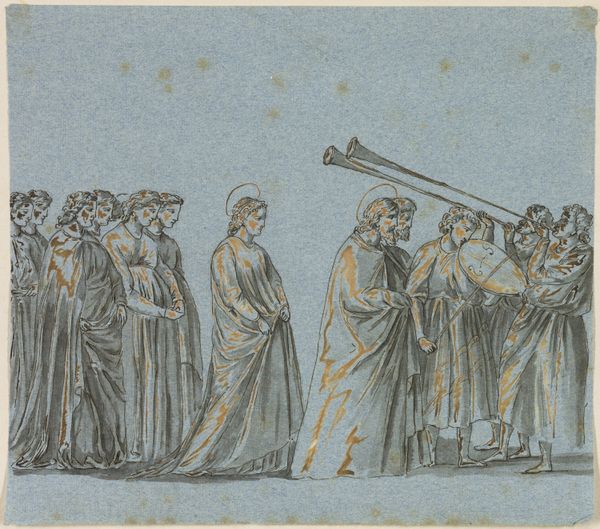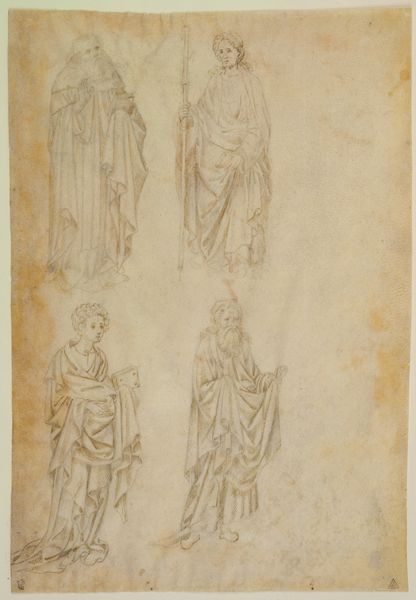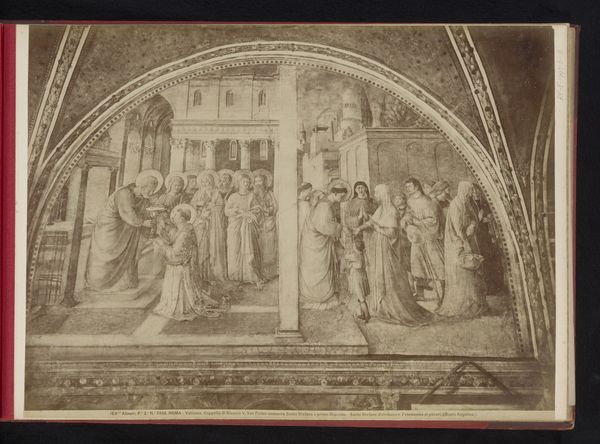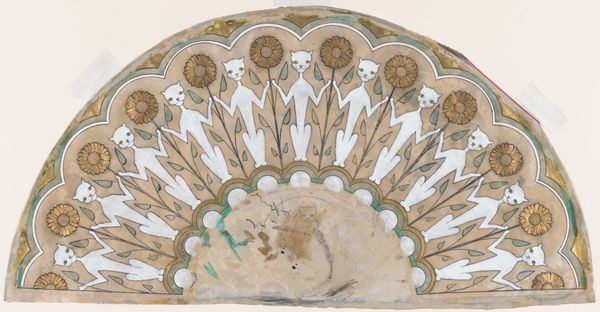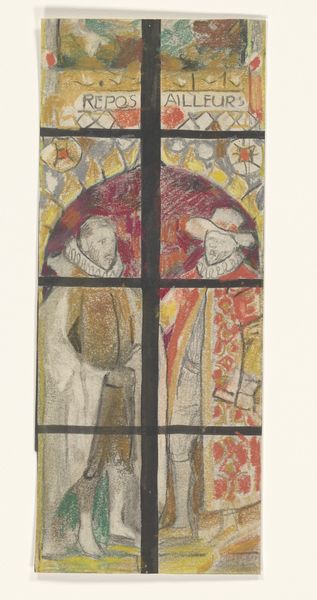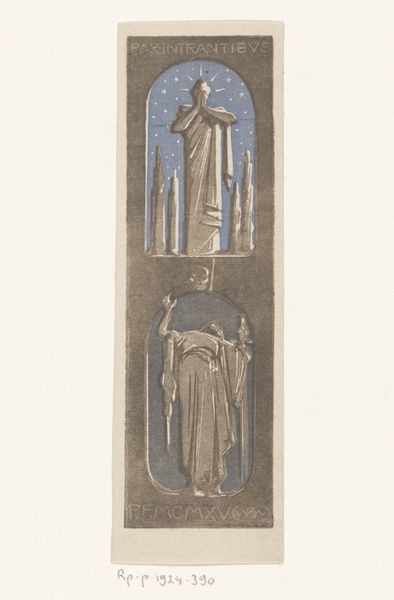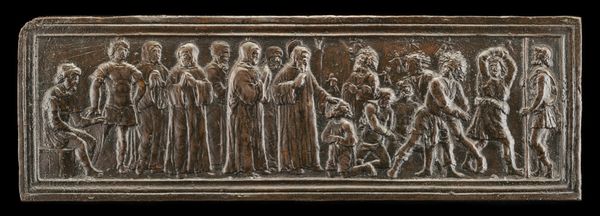
painting, watercolor
#
portrait
#
medieval
#
painting
#
figuration
#
watercolor
#
watercolour illustration
#
watercolor
Dimensions: height 189 mm, width 266 mm
Copyright: Rijks Museum: Open Domain
Editor: This is “Six Standing Praying Saints,” a watercolor by Lodewijk Schelfhout, created sometime between 1891 and 1943. The muted tones give it a very solemn, almost somber feel. What do you see in this piece? Curator: I see a visual echo of medieval devotional art, but presented through the lens of modern uncertainty. The figures are almost identical, each confined to their narrow space, heads bowed. It makes me wonder about the purpose of such fervent devotion in a world rapidly changing due to industrialization and secularism. Do their prayers affect any change? Does the repetition drain the prayer of meaning, turning it into an empty ritual? Editor: So you're suggesting the artist is using these figures to ask questions about faith itself? Curator: Exactly. And it is not just about religious faith but also faith in systems and social norms. Schelfhout paints these saints during a period that saw the rise of new political ideologies that challenged traditional religion. The similar robes almost erase individual identity, as if each saint embodies collective rather than personal values. Is it about seeking guidance, solidarity, or something else entirely? Editor: It's interesting how relevant these questions still are. It is so compelling. Curator: Absolutely. I think this work serves as a potent reminder that art doesn't exist in a vacuum. It reflects the hopes, anxieties, and power dynamics of its time, while prompting us to examine our own values and beliefs. Editor: I never thought about this way. Thanks so much for helping me understand it. Curator: It was my pleasure! Analyzing the art within these multilayered frames of reference really opens our eyes, doesn't it?
Comments
No comments
Be the first to comment and join the conversation on the ultimate creative platform.
